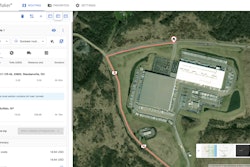In early March 2023, 46-year-old Norfolk Southern train conductor Louis Shuster was making his way through the Cleveland-Cliffs integrated steel facility property along the Cuyahoga River in Cleveland, Ohio, when he was struck by a dump truck and fatally injured.
The tragedy prompted a National Transportation Safety Board investigation into the safety culture of the railroad. It was the third incident involving Norfolk Southern in the span of over one month. With this incident — as well as others, such as the toxic East Palestine train derailment, an additional derailment in October 2022 in Sandusky, Ohio, and 68 fatal crashes involving the USPS that have killed 79 people in the past three years — it begs the question: should we continue to let companies set and monitor their own transportation safety policies?
As the continued push to invest in boosting American manufacturing grows, domestic transportation volume is expected to increase significantly. It's essential that transportation industry leaders urge companies to use safety technology to ensure that accidents and fatalities do not continue to rise.
Safety first?
The transportation industry is facing an increasing number of road safety concerns that require significant action to ensure the safety of all drivers. The most recent Federal Motor Carrier Safety Administration (FMCSA) data reports that large truck crashes were steadily on the rise since 2009. Furthermore, the National Highway Traffic Safety Administration (NHTSA) reports that vehicle-related deaths in the U.S. have increased by 7.2% from 2019 to 2020.
Most fleets prioritize safety measures and rightfully assess their safety performance on a regular basis, but others may leave issues such as driver training and vehicle maintenance up in the air, leading to a potential lack of accountability.
Despite the resistance from many drivers, technology like driver-facing cameras are still being investigated by the American Transportation Research Institute (ATRI) for their safety impact. However, the FMCSA estimates that the adoption of video systems and other safety technologies like driver-facing dash cams could potentially prevent up to 63,000 crashes per year.
As more goods will be transported on roads, the risk of accidents and fatalities will increase accordingly if nothing is done in time.
Ensuring safe journeys with the right tech
Luckily there are many safety technologies that transportation companies can adopt to reduce the risk of accidents and fatalities.
The range of advanced driver assistance systems (ADAS) can help drivers avoid collisions by providing real-time alerts. These systems can include lane departure warnings, automatic emergency braking and blind spot monitoring, among others. AI fleet dash cams can also monitor drivers for signs of drowsiness or texting while driving. Additionally, the technology analyzes traffic patterns to identify proactive and risky distances to correct unsafe actions, reducing the likelihood of accidents.
Unsurprisingly, these driver safety solutions are NHTSA-approved, with the administration stating, “these technologies will help protect drivers and passengers, as well as bicyclists and pedestrians.”
By adopting ADAS, AI fleet dash cams and telematics systems, transportation companies can ensure that their drivers are operating vehicles safely and efficiently, but there are also serious steps to take beyond internal oversight. At a certain point, the federal government may need to set and enforce new industry standards.
The legislative road ahead
The adoption of safety technology in the trucking industry can be further encouraged through state and federal legislation. ELD regulations provide a great HOS use case for further legislative action.
Industry leaders and legislators alike can use precedence to follow the example of the ELD mandate that was initiated by the MAP-21 Act of 2012 and formally introduced in 2015. The mandate required all commercial truck drivers to use ELDs to record their driving hours, replacing the traditional paper logbooks and basic onboard recording devices that were prone to errors and fraud.
Similar mandates could be implemented for the technologies mentioned, like ADAS or other collision avoidance systems companies use in their fleet management software.
To make sure companies enforce the mandates, the government could offer incentives to adopt safety technology, including tax credits or subsidies for the purchase and installation of advanced safety technology. The government could also offer reduced insurance premiums for companies that demonstrate a commitment to safety depending on different thresholds met or a track record without collisions or accidents.
It is essential to monitor the effectiveness of safety technology and make adjustments as necessary. This could include regular reviews of safety technology implementation, audits of transportation companies to ensure compliance with safety mandates, and ongoing research to identify new safety technologies that could be adopted in the industry.
Another way to encourage the adoption of safety technology is through public-private partnerships.
We’ve recently seen similar examples including the “Made in America” initiative, an Executive Order and proposed legislation pushing to revitalize the American manufacturing base and strengthen critical supply chains; the CHIPS Act, which will attempt to reverse acute semiconductor shortages and build more resilient technological supply chains for U.S. manufacturers; or the $1.4 billion set aside to modernize America’s freight and passenger rail infrastructure through bipartisan legislation.
The government could elect to work with transportation companies and technology providers to develop and test new safety technologies and provide funding for their implementation. This also includes investing in the development of reliable communication networks and data systems that can support the transmission of safety-related data between vehicles, infrastructure and the government.
With catastrophic accidents on the rise, safety should be a top priority for any transportation company. By making safety technology an enforced requirement, transportation companies can ensure that their drivers are equipped with the tools they need to operate safely on the roads. Ultimately, safety technology should be seen as a necessary investment that benefits both transportation companies and society as a whole.













